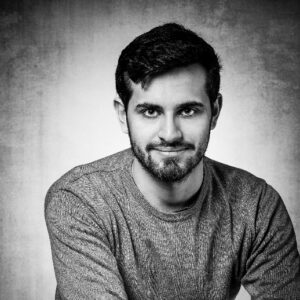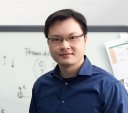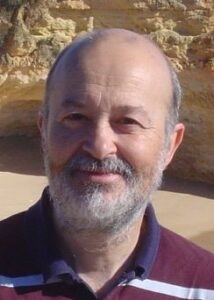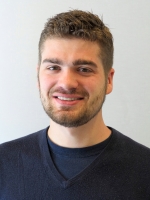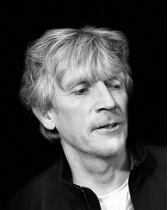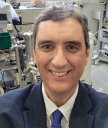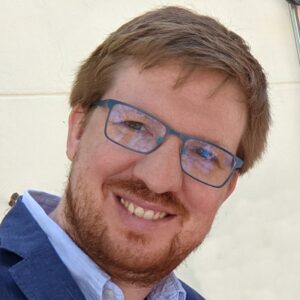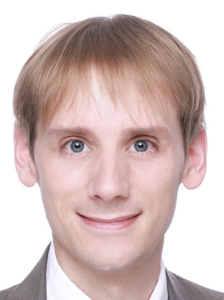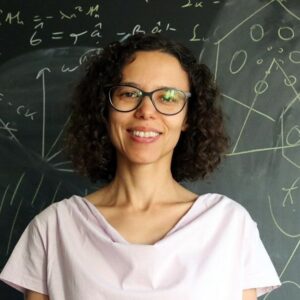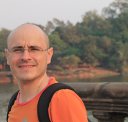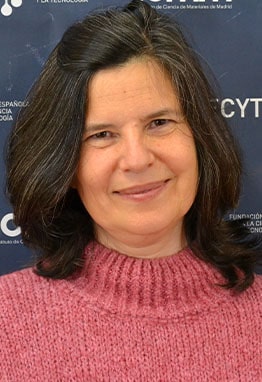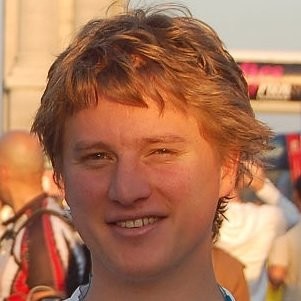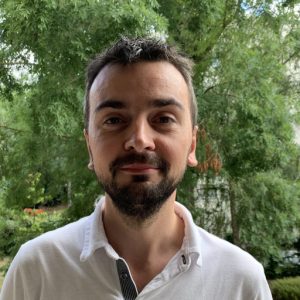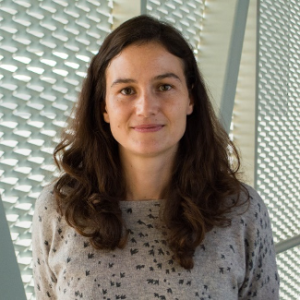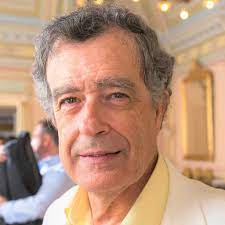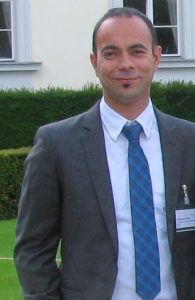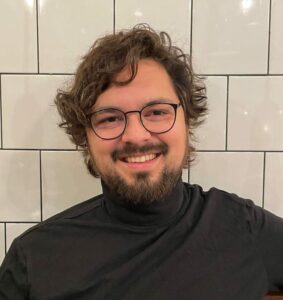
Antonio Manesco
Quantum Tinkerer group, Delft University of Technology
Identifying biases of the Majorana scattering invariant
When: 12:00-13:00 CET, May 8th (Thursday), 2025
Where: Sala de Seminarios (182), ICMM-CSIC, Campus de Cantoblanco, Madrid
The easily accessible experimental signatures of Majorana modes are ambiguous and only probe topology indirectly: for example, quasi-Majorana states mimic most properties of Majoranas. Establishing a correspondence between an experiment and a theoretical model known to be topological resolves this ambiguity. Here we demonstrate that, already theoretically, determining whether a finite system is topological is by itself ambiguous. In particular, we show that the scattering topological invariant –a probe of topology most closely related to transport signatures of Majoranas–has multiple biases in finite systems. For example, we identify that quasi-Majorana states also mimic the scattering invariant of Majorana zero modes in intermediate-sized systems. We expect that the bias due to finite size effects is universal, and advocate that the analysis of topology in finite systems should be accompanied by a comparison with the thermodynamic limit. Our results are directly relevant to the applications of the topological gap protocol.
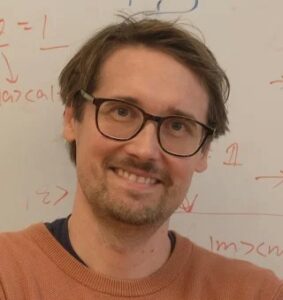
Jan Marcus Dahlström
Department of Physics, Lund University
Ultrafast-and-ultrastrong coupling at ultraviolet wavelengths
When: 12:00-13:00 CET, April 9th (Wednesday), 2025
Where: Sala de Seminarios (182), ICMM-CSIC, Campus de Cantoblanco, Madrid
Recent advances in free-electron laser (FEL) technology have intensified interest in light-matter interactions in the XUV regime. Our group has been at the forefront of theoretical developments in this field and working closely with experimentalists, c.f. [1] and [2]. While previous studies have focused on traditional strong-coupling processes, enforcing energy conservation via the rotating-wave approximation, we explore now a distinct regime that challenges traditional approximations, namely a regime for ultrastrong coupling on ultrafast timescales, which leads to giant counter-rotating oscillations on the attosecond timescale. Additionally, the use of time symmetries in strong-coupling will be introduced to control quantum entanglement in photoionization [3].
[1] Nandi, S., et al. Observation of Rabi dynamics with a short-wavelength free-electron laser. Nature 608, 488–493 (2022).
[2] Nandi, S., et al. Generation of entanglement using a short-wavelength seeded free-electron laser. Sci. Adv.10, eado0668 (2024).
[3] Stenquist, A. and Dahlström, J. M. . Harnessing time symmetry to fundamentally alter entanglement in photoionization. Phys. Rev. Research 7, 013270 (2025).
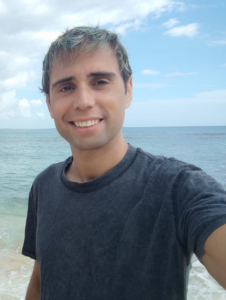
David Ayuso
Department of Chemistry, Molecular Sciences Research Hub, Imperial College London, W12 0BZ London, UK
Ultrafast chirality: shaping light in 3D to twist electrons on a sub-femtosecond timescale
When: 11:00-12:00 CET, April 9th (Wednesday), 2025
Where: Sala de Seminarios (182), ICMM-CSIC, Campus de Cantoblanco, Madrid
Chirality—the property of an object that cannot be superimposed on its mirror image—is ubiquitous in nature. Like our hands, opposite versions of the same chiral molecule (R and S enantiomers) behave identically unless they interact with another chiral object. Molecular chirality is rapidly becoming essential in nanotechnology [1], e.g. for developing molecular motors and spintronic devices. The unbalance between R and S biomolecules on Earth (amino acids, sugars, DNA, etc.) supports life. This homochirality gives different biological activities to opposite versions of a chiral drug or pesticide, with profound implications for pharmaceuticals and agriculture. Moreover, abnormal enantiomeric ratios of chiral biomarkers have recently been linked to cancer, Alzheimer’s, diabetes, and other diseases [2].
Having efficient tools for rapid chiral discrimination is therefore vital. However, current optical methods are inefficient because they rely on the (chiral) helix that circularly polarised light draws in space. The pitch of this helix—determined by light’s wavelength—is ~10,000 times larger than the molecules. Consequently, the molecules perceive the helix as a flat circle, hardly feeling its chirality. This results in weak chiral sensitivity, typically <0.1%, which presents major limitations [3]. We can overcome these limitations by creating synthetic chiral light [4-6], where the tip of the electric-field vector traces a 3D chiral trajectory in time. This new type of chiral light can drive ultrafast chiral currents inside the molecules, which interact with the chiral molecular skeleton in a highly enantiosensitive manner, leading to 100% chiral sensitivity.
In this presentation, I will show how we can shape light’s polarisation in 3D to achieve highly efficient chiral sensing [4-10] and manipulation [11], together with theoretical and computational results that support the feasibility of our approaches. Current optical instrumentation enables several strategies for 3D shaping, such as using several laser beams that propagate non-collinearly [4-6,11], only one beam but tightly focused [7,8], vortex beams to create topological chiral light [9], or ultrafast TACOS [10]. I will discuss how we can bring these ideas to free-electron lasers (FEL), taking advantage of important developments in FEL science and technology that enable the generation of phase-locked two-colour radiation.
[1] J. Brandt et al, Nature Reviews Chemistry 1, 0045 (2017)
[2] Y. Liu et al, Nature Reviews Chemistry 7, 355 (2023)
[3] D. Ayuso et al, Phys Chem Chem Phys 24, 26962 (2022)
[4] D. Ayuso et al, Nature Photonics 13, 866 (2019)
[5] D. Ayuso et al, Nature Communications 12, 3951 (2021)
[6] J. Vogwell et al, Science Advances 9, eadj1429 (2023)
[7] D. Ayuso et al, Optica 8, 1243 (2021)
[8] L. Rego et al, Nanophotonics 12, 14, 2873 (2023)
[9] N. Mayer et al, Nature Photonics 18, 1155 (2024)
[10] J. Terentjevas et al, ArXiv:2406.14258v1 (2024)
[11] A. Ordóñez et al, ArXiv:2309.02392 (2023)

Juan Torres Luna
TU Delft – Quantum Tinkerer group
Understanding the fate of the poor man’s Majorana in the long-chain limit
When: 12:00-13:00 CET, February 18th (Tuesday), 2025
Where: Sala de Seminarios (182), ICMM-CSIC, Campus de Cantoblanco, Madrid

Amir Rahamni
Instytut Fizyki PAN, Warsaw, Poland
Quantum Many-Body Interactions and Light-Matter Coupling: Expanding the Frontier of Reservoir Computing and Machine Learning
When: 12:00-13:00 CET, December 2nd (Tuesday), 2024
Where: Sala de Juntas, ICMM-CSIC, Campus de Cantoblanco, Madrid
Quantum reservoir computing (QRC) has emerged as a powerful paradigm for tackling machine-learning tasks by using the rich dynamics of quantum systems. At its core, QRC relies on effective control drives to encode input data and nonlinear mappings to transform these inputs into output features. Photonic platforms are likely candidates for QRC. However, they often lack sufficient nonlinearity for optimal performance. To overcome this limitation, a hybrid optoelectronic approach can be used, combining the speed of optical processing with the inherent nonlinearity of electronics. In this seminar, we present a method to enhance nonlinearity by employing wavefunction engineering within the regime of light-matter coupling. We explore various structures, including GaAs and TMD materials in cavities and waveguides. Through some examples, we demonstrate improvements in the accuracy of some quantum tasks, highlighting the potential of QRC in advancing machine learning.
Andrea Maiani
WINQ Postdoctoral fellow, Nordita.
Impurity States in Altermagnetic Superconductors
When: 12:00-13:00 CET, November 26th (Tuesday), 2024
Where: Sala de Seminarios (182), ICMM-CSIC, Campus de Cantoblanco, Madrid
Altermagnets are a novel class of magnetic materials distinct from ferromagnets and antiferromagnets, characterized by vanishing net magnetization and unique spin-split band structures – appealing features for exotic quantum phenomena and spintronics applications. This talk explores the interplay between altermagnetism and superconductivity, focusing on how impurities can serve as local probes of altermagnetic superconductors. I will briefly introduce altermagnetic materials, their interplay with superconductivity, and review the basic theory of impurity states in superconductors. I will then present our original theoretical work on the role of impurities in altermagnetic superconductors, predicting the emergence of spin-polarized subgap states that extend along the crystal axes. These states form degenerate doublets, which can be split by crystal symmetry breaking or a magnetic field aligned with the Néel vector. Their unique spatial and spin properties provide measurable signatures via scanning tunneling microscopy, serving as a hallmark for altermagnetic superconductivity. Finally, I will discuss the interaction between impurities, revealing a position-dependent, spin-selective coupling that enables in-situ control of devices crucial for quantum information processing and topological superconductivity.

Natalia Berloff
Department of Applied Mathematics and Theoretical Physic, University of Cambridge, UK
Non-Hermitian Gain-Based Computing with Coupled Light-Matter Systems
When: 12:00-13:00 CET, November 7th (Thursday), 2024
Where: Sala de Seminarios (182), ICMM-CSIC, Campus de Cantoblanco, Madrid
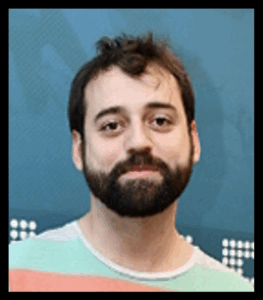
Hugo Aramberri
Luxembourg Institute of Science and Technology (LIST)
Brownian electric bubble quasiparticles and topological phase transitions in frustrated ferroelectrics
When: 12:00-13:00 CET, November 14th (Thursday), 2024
Where: Sala de Juntas, ICMM-CSIC, Campus de Cantoblanco, Madrid
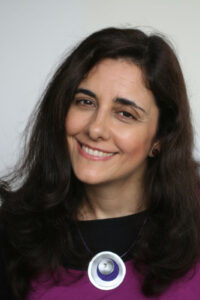
Valeria Ferrari
Departamento de Física de la Materia Condensada, Comisión Nacional de Energía Atómica (CNEA). Consejo Nacional de Investigaciones Científicas y Técnicas (CONICET). Instituto de Nanociencia y Nanotecnologia (CNEA-CONICET)
Radiation Effects at Oxide-Water Interfaces: Current Insights and Future steps
When: 12:00-13:00 CET, October 31th (Thursday), 2024
Where: Seminar Room (182), ICMM-CSIC, Campus de Cantoblanco, Madrid
The interaction between ionizing radiation and oxide-water interfaces is a key topic in material science research in the quest for materials with technological applications, such as nuclear waste management, metal corrosion in aqueous environments, and biological systems exposed to radiation. This talk will explore atomic-level processes occurring at these interfaces, with particular emphasis on hydrogen generation in oxides such as zirconia and copper oxide, both of which are used in nuclear facilities.
The current challenges in understanding the mechanisms behind these processes through electronic structure methodologies will be discussed, including density functional theory (DFT) and many-body perturbation theory (MBPT) approaches, such as the GW approximation and the Bethe-Salpeter equation (BSE). Our preliminary results in these materials, focusing on excitonic properties and radiation-induced processes, will also be presented.
This work is part of the Horizon project titled “Materials Radiation: From Basics to Applications” (MAMBA), which aims to deepen the understanding of material responses to irradiation and apply this knowledge to tailor and control the properties of materials exposed—either intentionally or unintentionally—to intense radiation environments. Finally, the talk will outline the future steps in this research, including modeling different oxide facets, analyzing excitonic wave functions, and using machine learning to describe the corresponding oxide-water interfaces.
Manhong Yung
Southern University of Science and Technology, China
From quantum inspired to quantum speedup
When: 12:00-13:00 CET, October 17th (Thursday), 2024
Where: Seminar Room (182), ICMM-CSIC, Campus de Cantoblanco, Madrid
Quantum computing has reached a critical moment. On the one hand, quantum hardware are continuously advancing. On the other hand, quantum computational advantage over classical computing has not yet been available for practical problems. Moreover, the road to universal quantum computing is still long. The highly anticipated quantum variational algorithm is still constrained by a small number of qubits and shallow circuits. Some scholars even think that “NISQ is dead”. In this talk, based on the applications of quantum-inspired algorithms, we introduce the concept of quantum acceleration algorithms and discuss how NISQ quantum hardware can act as an accelerator and add to the value of quantum computing through the mixture with classical computing.
———————————-
Fernando Martín
Departamento de Química, Universidad Autónoma de Madrid, 28049 Madrid, Spain
Instituto Madrileño de Estudios Avanzados en Nanociencia (IMDEA-Nano), 28049 Madrid, Spain
Attochemistry: chemistry at the attosecond time scale
When: 12:00-13:00 CET, October 10th (Thursday), 2024
Where: Salón de Actos, ICMM-CSIC, Campus de Cantoblanco, Madrid
With the advent of attosecond light pulses at the dawn of the twenty first century, access to the time scale of electronic motion, i.e., the ultimate time scale responsible for chemical transformations, was finally at our reach. Since the first attosecond pump-probe experiments performed in molecules [1,2], the field has grown exponentially, leading to a discipline that we call attochemistry [3]. As a result, it is nowadays possible to follow in real time the motion of the “fast” electronic motion in molecules, mostly in the gas phase, and understand how this motion affects the “slower” motion of atomic nuclei and vice versa. There are, however, new scenarios [4] that will allow one to extend the range of applications to more complex molecular systems, including the condensed phase, and to overcome some of the limitations of current attosecond technologies [5-9], such as the low intensity of attosecond pulses produced by high harmonic generation, the impossibility to generate such pulses in the visible and UV spectral regions to avoid molecular ionization, or the difficulties to combine them with truly imaging methods as those used in condensed matter physics for direct time-resolved observations of the electron density without the need for reconstruction from measured photoelectron, photoion or transient absorption spectra.
In this talk, I will describe current experimental and theoretical efforts aiming at overcoming the above-mentioned limitations, thus giving attochemistry the necessary push to investigate problems of real chemical interest.
References: [1] G. Sansone, F. Kelkensberg, J. F. Pérez-Torres, F. Morales, M. F. Kling, W. Siu, O. Ghafur, P. Johnsson, M. Swoboda, E. Benedetti, F. Ferrari, F. Lépine, J. L. Sanz-Vicario, S. Zherebtsov, I. Znakovskaya, A. L’Huillier, M. Yu. Ivanov, M. Nisoli, F. Martín, and M. J. J. Vrakking, Nature 465 763 (2010). [2] F. Calegari, D. Ayuso, A. Trabattoni, L. Belshaw, S. De Camillis, S. Anumula, F. Frassetto, L. Poletto, A. Palacios, P. Decleva, J. B. Greenwood, F. Martín, and M. Nisoli, Science 346, 336 (2014). [3] M. Nisoli, P. Decleva, F. Callegari, A. Palacios, and F. Martín, Chem. Rev. 117, 10760 (2017). [4] F. Calegari and F. Martín, Commun. Chem. 6, 184 (2023). [5] A. Palacios and F. Martín, WIREs Comput. Mol. Sci. e1430 (2020). [6] G. Grell, Z. Guo, T. Driver, P. Decleva, E. Plésiat, A. Picón, J. González-Vázquez, P. Walter, J. P. Marangos, J. P. Cryan, A. Marinelli, A. Palacios, and F. Martín, Phys. Rev. Res. 5, 023092 (2023). [7] M. Galli et al, Optics Letters 44, 1308 (2019). [8] M. Reduzzi et al, Optics Express 31, 26854 (2023). [9] M. Garg, A. Martín-Jiménez, M. Pisarra, Y. Luo, F. Martín and K. Kern, Nature Photonics 16, 196 (2022). [10] F. Vismarra, F. Fernández-Villoria, D. Mocci, J. González-Vázquez, Y. Wu, L. Colaizzi, F. Holzmeier, J. Delgado, J. Santos, L. Bañares, L. Carlini, M. Castrovilli, P. Bolognesi, R. Richter, L. Avaldi, A. Palacios, M. Lucchini, M. Reduzzi, R. Borrego- Varillas, N. Martín, F. Martín, and M. Nisoli, Nature Chemistry in press.
———————————–
Peter Kraus
Vrije Universiteit (VU) Amsterdam, Advanced Research Center for Nanolithography (ARCNL), Netherlands
Towards ultrafast imaging of correlated matter with transient high-harmonic generation
When: 12:00-13:00 CET, October 1st (Tuesday), 2024
Where: Main Hall, ICMM-CSIC, Campus de Cantoblanco, Madrid
The highly complex collective electron-dynamics in strongly correlated materials mandates experimental techniques with sub-fs temporal and nanometer spatial resolution. While a plethora of techniques exists, true nanometer imaging on fs or even sub-fs timescales remains elusive. Such techniques are required to follow the collective dynamics of electrons in strongly correlated materials in real time, which drive ultrafast phase transitions that are accompanied by technologically relevant order-of-magnitude resistivity switches.
High-harmonic generation (HHG) in solids has emerged 14 years ago. Gas-phase HHG is highly sensitive and thus optically controllable with regards to the microscopic generation
mechanism. The parallels between solid and gas-phase HHG suggest that solid-state HHG may be controlled in a similar manner, which enables a generally applicable all-optical light switch with wide application potential. The current literature on transient solid-state HHG confirms this opportunity of all-optical control of solid HHG [1]. In this talk, I will present our vision to use this light switch for sub-fs super-resolution nanoscale imaging by HHG from correlated materials. In particular, I will present three key experiments on our roadmap towards this goal.
On the nanoscale, we controlled HHG via engineering the surface topography of solids, which in turn demonstrates how solid HHG can be used for metrology on surfaces and tailored as a light source [2-4].
On the femtosecond time scale, we used the sensitivity of HHG to electronic band structure to follow ultrafast phase transitions in strongly correlated materials [5], and photocarrier dynamics in perovskites [6]. While the first measurements [2] showed nanoscale sensitivity, the second set of experiments [5,6] demonstrated that photoexcitation can be used to control light emission via solid HHG.
Combining both efforts, I will show first results how ultrafast control of solid HHG enables
HArmonic DEactivation microScopy (HADES) – a label-free super-resolution microscopy
below the diffraction limit of light [7]. Thinking ahead, the development of these techniques may enable resolution on the nanometer and femto- to attosecond scale fitted into a regular microscopy setting, with application potential ranging from strongly correlated materials to semiconductor metrology, photosynthetic processes, and medical imaging.
References:
[1] P. v. Essen, Z. Nie, B. de Keijzer, P.M. Kraus, arXiv:2402.15375, ACS Photonics, accepted (2024).
[2] S.D.C. Roscam Abbing, R. Kolkowski, Z.-Y. Zhang, F. Campi, L. Loetgering, A.F. Koenderink, P.M. Kraus,
Physical Review Letters 128, 223902 (2022).
[3] P. M. Kraus et al., US Patent App. 18/038,590 (2024).
[4] P. M. Kraus et al., US Patent App. 18/253,734 (2024).
[5] Z. Nie et al., Peter M. Kraus, Physical Review Letters, 131, 243201 (2023).
[6] M. v.d. Geest, J.J. de Boer, K. Murzyn, P. Juergens, B. Ehrler, P.M. Kraus, Journal of Phys. Chem. Lett., 14, 10810 (2023).
[7] K. Murzyn, M.v.d. Geest, L. Guery, Z. Nie, P.v. Essen, S. Witte, P.M. Kraus, arXiv:2403.06617, submitted (2024).
———————————————
Gerhard Klimeck
Purdue University, West Lafayette, IN 47907, USA
From Atomistic, Non-Equilibrium Quantum Statistical Mechanics Theory
to Today’s Transistor Design and Global Impact – A 25-Year Journey
When: 11:00-12:00 CET, September 18th (Wednesday), 2024
Where: Seminar Room (182), ICMM-CSIC, Campus de Cantoblanco, Madrid
30 years ago, the appropriate quantum transport theories, basis sets, algorithms, user interfaces, and dissemination methods for quantum device modeling were subjects of intense debate and uncertainty. The development of the Nanoelectronic MOdeling (NEMO) toolset commenced in 1994 at Texas Instruments, continued in 1998 and NASA/JPL, and has been ongoing at Purdue since 2004. Modern nanoscale transistor design extensively employs advanced quantum transport modeling tools, representing physical devices in three dimensions with atomistic basis sets. The NEMO implementations of the Non-Equilibrium Green Function (NEGF) formalism with atomistic tight-binding basis have become the benchmark for quantitative and predictive device simulation. This methodology has now been widely adopted by most device modeling research teams. In 2015, Intel integrated NEMO5 into their in-house design suite, utilizing a top-100 ranked supercomputer for design explorations [1]. Silvaco initiated commercialization efforts [2] in 2018, with industry leaders such as Samsung and TSMC developing their in-house solutions based on NEMO. NEMO’s capability to accurately model crystal orientations and strain in complex systems facilitated the development of Texas Instruments’ rotated substrate technology in 2004 [3], significantly impacting chips used in billions of cell phones. Contemporary 3D FinFETs [4] and nanosheet transistors share the 5 nm central length characteristics with 1D resonant tunneling diodes (RTDs). The quantitative and predictive modeling of 1D RTDs (1994-1997) established the standards necessary for today’s 3D nano-transistors.
NEMO’s applications extend beyond usage by experts equipped with specialized computational hardware. Over 25,000 users on nanoHUB.org, the pioneering comprehensive scientific computing cloud platform, have investigated various nanoscale devices such as nanowires, ultra-thin-body transistors, and quantum dots utilizing the intuitive NEMO/OMEN tools. These tools are supplemented by straightforward applications, rendering them accessible to a broad spectrum of users. Notably, more than fifty percent of nanoHUB’s simulation users participate in formal educational settings across 1,000 institutions globally, immersing themselves in device exploration and modeling principles. nanoHUB hosts 700+ apps and tools, along with over 170 courses.
This presentation will provide an overview of the critical physical phenomena needed to be captured for realistic device design, how high-performance-computing can deliver results to engineers & students, and how NEMO has been deployed on nanoHUB.org.
This work would not have been possible without my hundreds of collaborators who helped to build, test drive, break, and rebuild NEMO/OMEN [5-9,12-14] and nanoHUB [10,11]. I have the deepest appreciation for their hard work, dedication and in most cases their personal friendship. The citations here just cover some of the fundamental developments. Citations to these papers lead to hundreds of publications enabled by my collaborators and friends.
[1] Mark Stettler et al., IEDM, 39.1.1 (2019)
[2] Silvaco – Victory Atomistic, silvaco.com
[3] RC Bowen et al., US patent 7,268,399 (2004)
[4] G. Yeap et al., IEDM, 36.7.1 (2019)
[5] G. Klimeck, et al., APL Lett. 67, 2539 (1995)
[6] RC Bowen, et al., JAP 81, 3207 (1997)
[7] Jing Wang, et al., APL. 86, 093113 (2005)
[8] M Luisier, et al., Phys. Rev. B 74, 205323 (2006)
[9] G Klimeck el al, Superlatt. and Microstr., 27, 77, (2000)
[10] G Klimeck, et al, IEEE CISE, Vol. 10, 17 (2008)
[11] M. Hunt et al, PLoS ONE 17(3): e0264492.
[12] R Lake, et al.,JAP 81, 7845 (1997)
[13] G. Klimeck, et al, Computer Modeling in Engineering and Science (CMES) 3, 601-642 (2002).
[14] S Steiger et al., IEEE Tr. Nanotechn., 10, 1464, (2011)
—————————–
Elton J. G. Santos
Higgs Centre for Theoretical Physics, Institute for Condensed Matter and Complex Systems – School of Physics and Astronomy, The University of Edinburgh, UK
Exploring the Limits of Ultrafast Magnetism in Quantum Materials
When: 12:00-13:00 CET, June 5th (Wednesday), 2024
Where: Seminar Room (182), ICMM-CSIC, Campus de Cantoblanco, Madrid
Long searched but only now discovered two-dimensional (2D) magnets are one of the selected group of materials that retain or impart strongly spin correlated properties at the limit of atomic layer thickness. In this presentation, I will discuss how different layered compounds (e.g., CrX3 (X=F, Cl, Br, I), MnPS3, Fe5-xGeTe2, Cr2Ge2Te6) can provide new playgrounds for applications and fundamental exploration of spin correlations involving quantum-effects, topological spin-excitations and ultrafast laser pulses. In particular, I will show how van der Waals magnets do not require any magnetic anisotropy to stabilize 2D magnetism and demonstrate the null valid of the Mermin-Wagner theorem in practical applications. Moreover, some recent results of ultrafast laser excitations on different vdW heterostructures will be shown towards all-optical control of their magnetic properties with efficient heat management.
Ricardo Lobo
ESPCI Paris – PSL University – CNRS – Sorbonne Université, France
Correlations and dispersive Dirac physics in the quantum material family BaCoS2-BaNiS2 – Reverse band-structure engineering of the optical conductivity
When: 12:00-13:00 CET, May 30th (Thursday), 2024
Where: Seminar Room (182), ICMM-CSIC, Campus de Cantoblanco, Madrid
BaCoS2 and BaNiS2 are the end members of a solid solution that shows a vast array of quantum properties. The Co material is close to a strongly correlated insulator with an antiferromagnetic transition, as well as a structural phase transition, around room temperature. At 28% Ni doping this material undergoes an electronic metal-insulator phase transition to a Drude metal. The metallic state persists all the way to the pure Ni compound. At this point, in addition to a Drude peak, we observe a strong contribution from bands with linear dispersion at the Fermi level, which give origin to dispersive Dirac nodal lines. We measured the optical conductivity of these materials and combined them with ab-initio calculations to reverse engineer the role of each band in the physical response of these materials. We explained uncommon features in their optical response such as a linear dispersion of the optical conductivity [1] and the existence of an isosbestic line separating a spectral-weight transfer across Dirac nodal states [2].
[1] D. Santos-Cottin, Y. Klein, P. Werner, T. Miyake, L. de’Medici, A. Gauzzi, R.P.S.M. Lobo, and M. Casula, Linear behavior of the optical conductivity and incoherent charge transport in BaCoS2, Phys. Rev. Materials 2, 105001 (2018). arXiv: 1712.01539.
[2] D. Santos-Cottin, M. Casula, L. de’Medici, F. Le Mardelé, J. Wyzula, M. Orlita, Y. Klein, A. Gauzzi, A. Akrap, and R.P.S.M. Lobo, Optical conductivity signatures of open Dirac nodal lines, Phys. Rev. B 104, L201115 (2021). arXiv: 2104.05521.
Johannes Feist
Department of Theory of Condensed Matter Physics, Universidad Autonoma de Madrid, Spain
Using cavities to modify material properties
When: 12:00-13:00 CET, April 25th (Thursday), 2024
Where: Seminar Room (182), ICMM-CSIC, Campus de Cantoblanco, Madrid
The use of cavity quantum electrodynamical effects, i.e., of vacuum electromagnetic fields, to modify material properties has rapidly gained popularity and interest in the last decade. A canonical example of this is strong light-matter coupling, reached when the interaction of material excitations with confined light modes overcomes dissipation effects and the two parts hybridize to form mixed light-matter eigenstates, so-called polaritons. These polaritons inherit properties of both light and matter excitations and additionally display fundamentally new phenomena. The large range of possible material systems and cavity architectures opens a rich playground for novel functionalities. In the talk, I will discuss several topics related to this overall field, including the modification and photophysics and photochemistry in organic molecules, some fundamental results and pitfalls for the modification of low-energy excitations, and recent progress on few-mode field quantization in complex nanophotonic structures, i.e., strategies to obtain the construction of cavity-QED-like models for arbitrary cavity geometries and materials.
Georg Engelhardt
Southern University of Science and Technology in the Shenzhen Institute of Quantum Science and Engineering
Photon-Resolved Floquet Theory and its application to quantum sensing
When: 12:00-13:00 CET, April 11th (Thursday), 2024
Where: Seminar Room (182), ICMM-CSIC, Campus de Cantoblanco, Madrid
Quantum sensing uses quantum properties of matter to enhance the sensitivity in precision measurements. Besides others, it already finds important applications in atomic clocks, for medical purposes, and in the search for dark matter. Many currently employed quantum sensing protocols exhibit a simple setup, in which a laser probes the optical properties of an ensemble of atoms, molecules, or other quantum emitters, which are subject to the external stimulus to be measured. An important figure of merit to predict the sensitivity is the signal-to-noise ratio. While it is easy to theoretically calculate the signal, the accurate prediction of the noise is challenging.
Motivated by this, we have developed the Photon-Resolved Floquet Theory (PRFT), which besides predicting the state of a driven quantum system (e.g., the atom or molecule), can also predict the number of photons exchanged with the coherent driving field [1,2]. To this end, the PRFT introduces counting fields into the semiclassical equations of motions, that track the photons in the driving field. Interestingly, the PRFT predicts light-matter entanglement in the Floquet-state basis. This effect can be employed to devise a measurement-based quantum communication protocol, which has favorable scaling properties over long distances. We apply the PRFT to spectroscopy, where it can predict the Fisher information of coherent spectroscopic signals [3]. The PRFT thus opens new paths to design and optimize quantum sensors based on AMO systems, which might assist in the discovery of new physics.
[1] G. Engelhardt, S. Choudhury, and W. V. Liu, Phys. Rev. Research 6, 013116 (2024)
[2] G. Engelhardt, JY. Luo, V. M. Bastidas, and G. Platero, arXiv: 2311.01509
[3] G. Engelhardt et al., in preparation
—————————–
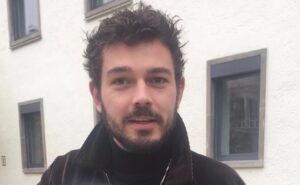 Christopher W. Wächtler
Christopher W. Wächtler
Department of Physics
University of California at Berkeley
Dissipation as versatile resource for collective quantum dynamics
When: 12:00-13:00 CET, April 16th (Tuesday), 2024
Where: Salon de Actos, ICMM-CSIC, Campus de Cantoblanco, Madrid
The widespread belief is that quantum systems need to be protected from the environment as well as possible for quantum technology to fulfill its promise of revolutionizing computing, communication, and sensing. However, the advent of the Noisy Intermediate-Scale Quantum (NISQ) era forces us to investigate dissipation and decoherence and to find ways to utilize them effectively. This talk aims to provide examples where interactions with the environment play a pivotal role in generating and detecting collective quantum phenomena, inspiring new perspectives on harnessing environment interactions for advancing quantum technologies. Firstly, we will delve into the emerging field of topological quantum synchronization, a novel form of synchronization where topology and dissipation intertwine to protect synchronized dynamics against perturbation. Next, we will explore how carefully tailored interactions with the environment induce energy migration within small quantum spin networks characterized by a superradiant speed-up, demonstrating the potential for utilizing dissipation as a resource rather than a hindrance. Finally, if time permits, I will introduce a novel methodology for probing quantum criticality in non-equilibrium systems. This method circumvents the shortcomings of standard perturbative expansions, enabling a comprehensive and thermodynamically consistent understanding of critical phenomena in systems coupled to non-Markovian reservoirs.
Paloma A. Huidobro
Departamento de Física Teórica de la Materia Condensada and Condensed Matter Physics Center (IFIMAC), Universidad Autónoma de Madrid
Light and photons in time varying media
When: 12:00-13:00 CET, March 21st (Thursday), 2024
Where: Salon de Actos, ICMM-CSIC, Campus de Cantoblanco, Madrid
In this talk I will first introduce the basic concepts of wave interactions in time varying media. I will discuss how temporal modulations of the optical parameters offer new pathways in light control, as energy is not necessarily conserved in these time-dependent systems, and non-reciprocal effects can be realized [1]. I will concentrate on a class of space-time modulations where parameters are modulated in a travelling-wave form, such that there is an apparent motion of the optical properties, and discuss light propagation in these systems: from non-reciprocal effects even in the quasistatic limit, to synthetic motion and the link to the Fresnel drag effect of light in moving media, through an unconventional linear gain mechanism.
————————————-
Dario Bahamon
Mackenzie Presbyterian University, São Paulo, Brazil
Quantum transport in twisted bilayer graphene
When: 12:00-13:00 CET, February 29th, 2024
Where: Salon de Actos, ICMM-CSIC, Campus de Cantoblanco, Madrid
While the van der Waals interaction in layered crystals is weak, there is hybridization that gives rise to a superlattice potential as a function of the rotation in twisted heterostructures. The long-range modulation of this potential results in both commensurate and incommensurate structures, involving tens of thousands of atoms in a single moiré supercell. This poses significant challenges to conventional methods for studying the electronic properties of these materials. In this talk, I will present new approaches to accessing the quantum transport properties of twisted heterostructures, specifically applied to twisted bilayer graphene.
Belén Valenzuela
ICMM-CSIC, Madrid, Spain
A toy Landau model for illustrating learning and unlearning of nociplastic pain
When: 12:00-13:00 CET, March 3rd, 2024
Where: Salon de Actos, ICMM-CSIC, Campus de Cantoblanco, Madrid
Chronic pain is increasing at an alarming rate specially among young people and kids. This disturbing situation has increased the research interest in gaining a deeper understanding of chronic pain. Physiologically, nociplastic pain has been defined as a significant component of chronic pain not linked to tisular damage but to a nocive plasticity pattern of the nervous and immune system. From phenomenological cognitive sciences, there is compelling evidence that the consolidation of nociplastic pain is a complex, nonconscious learned process of threat perception that gives rise to maladaptive loops. Embodied neurobiological pain education is emerging as a promising approach to reduce the perception of threat which leads to a decrease of symptom intensity and frequency, improved functionality and eventual symptom alleviation. However, this approach is not well known among clinicians and society at large, creating a communication problem that unfortunately perpetuates the suffering of the patients. We propose a toy Landau model to describe the learning and unlearning process of nociplastic pain, aiming to clarify this complex situation and facilitate communication across different sectors of society. Nociplastic pain corresponds to a first-order transition, with attention more likely in the alert-protection state than in the trust-explore state. Two appealing results of the model are that the perception of the critical context depends on personal history regarding the symptom and that maladaptive loops are formed when there is alarming learned historical information about the symptom, along with confused and contradictory expert information, as seen in nocebo messages. Learning and unlearning in the model correspond to a change in control parameters that can weight more the alert-protection state, the trust-explore state, the uncertain state or the neutral state. This description clarifies why neurobiological education is the ground therapy from which others must be built to embody the accesible, clear, and trustworthy information. The model could be used to address other mind-body syndromes.
YouTube link: https://www.youtube.com/watch?v=i7mHqDFsc_4
Nicolas Leconte
University of Seoul, Korea
Real-space calculations on layered materials: from lattice reconstruction to electronic structure
When: 12:00-13:00 CET, September 18th (Monday), 2023
Where: Seminar Room, ICMM-CSIC, Campus de Cantoblanco, Madrid
In my talk, I illustrate our methodology to obtain the electronic properties of materials based on lattice calculations, both at the level of the lattice relaxations and the tight-binding electronic structure calculations. I illustrate this approach on a variety of materials, including twisted bilayer graphene (tBG), alternated twisted multilayer graphene (tNG), t2G on hBN (t2G/hBN), graphene on hBN (GBN) and hBN-encapsulated bilayer graphene (hBN/BG/hBN), while focusing on relevant physics for each of these systems, from magic angle flat band signatures (tBG and tNG), primary and secondary gap behavior in presence of a substrate (GBN), commensuration torques (t3G and t2G/hbN) and substrate-induced layer polarization of BG (hBN/BG/hBN).
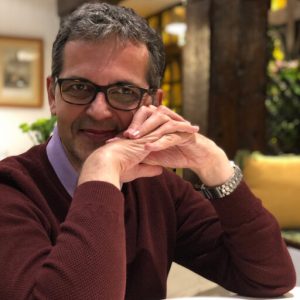
Antonio Prados
Departamento de Física Atómica, Molecular y Nuclear
Universidad de Sevilla, Spain
Swift state-to-state transformations in stochastic systems
When: 12:00-13:00 CET, July 17th (Monday), 2023
Where: Seminar Room, ICMM-CSIC, Campus de Cantoblanco, Madrid
In the last years, there has been a great interest in the possibility of accelerating the connection between given initial and final states. The field was started with the idea of “shortcuts to adiabaticity” (STA) in the quantum framework, in which the general goal was to obtain the adiabatic evolution but in a finite time—by driving the system with an additional term in the Hamiltonian. Several techniques have been proposed to achieve this goal: inverse engineering, counter-diabatic driving, fast-forward, to name a few [1]. Both the idea of accelerating the connection between states and the techniques employed have later been transposed to stochastic systems, mainly trying to find shortcuts for the relaxation between equilibrium states. Since “adiabatic” has the meaning of zero-heat in thermodynamics, the term “swift state-to-state transformations” (SST) has been proposed to encompass all the protocols that aim at accelerating the connection in stochastic systems [2]. This is done by tailoring the time evolution of physical properties that control the time evolution of the system of interest, e.g. the stiffness of a harmonic trap or the temperature of the thermal bath—i.e. the control functions. Once the feasibility of connecting in a finite time is shown, there appears the problem of optimising it in a certain sense: connection time, dissipation, or other figures of merit. This makes it necessary, in general, to resort to optimal control theory to find the optimal time protocol for the control functions. The above general ideas will be illustrated with several examples of stochastic systems.
[1] D. Guéry-Odelin, A. Ruschhaupt, A. Kiely, E. Torrontegui, S. Martínez-Garaot, and J. G. Muga. Rev. Mod. Phys. 91, 045001 (2019).
[2] D. Guéry-Odelin, C. Jarzynski, C. A. Plata, A. Prados, and E. Trizac, Driving rapidly while remaining in control: classical shortcuts from Hamiltonian to stochastic dynamics, Rep. Prog. Phys. 86, 035902 (2023).
——————————————————————————————————————–
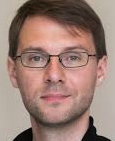
Mikhail M. Otrokov,
Centro de Física de Materiales (CFM-MPC), Centro Mixto CSIC-UPV/EHU, San Sebastián, Spain
IKERBASQUE, Basque Foundation for Science, Bilbao, Spain
Combining magnetism and topology: from magnetic doping to intrinsic magnetic topological insulators
When: 12:00-13:00 CET, June 15th (Thursday), 2023
Where: Seminar Room, ICMM-CSIC, Campus de Cantoblanco, Madrid
In this talk, I will overview the developments in the field of magnetic topological insulators (MTIs) that led to the discovery of the intrinsic MTIs of the MnBi2Te4 family that attracts a great deal of attention nowadays. First, to describe the context in which materials such as MnBi2Te4 appeared in the research arena, I will discuss the magnetic doping and magnetic proximity effect approaches of introducing magnetism into a TI. Then, the two types of novel and promising interfaces involving MnBi2Te4 compounds will be discussed, as they are expected to show certain advantages over the latter two approaches. Next, the discovery of intrinsic MTIs of the MnBi2Te4 family will be overviewed. Finally, concerning current challenges of this field, we will consider in detail the issue of the Dirac point gap in the MnBi2Te4topological surface state that has caused a lot of controversy recently.
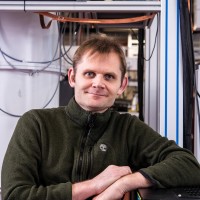
Prof. Giorgos Katsaros,
Institute of Science and Technology Austria (ISTA), Austria
Spin qubits and hybrid devices in planar Ge
When: 12:00-13:00 CET, May 26th (Friday), 2023
Where: Seminar Room, ICMM-CSIC, Campus de Cantoblanco, Madrid
Ge, the material that was first utilized for the development of transistors at Bell Labs in 1947, has recently attracted significant attention for its potential in the field of quantum information. Particularly, the focus has shifted towards hole gases in Ge/SiGe heterostructures due to their combination of high mobilities, strong spin-orbit interaction, and electrically adjustable g-factors. These attributes make Ge quantum wells not only a promising candidate for spin qubits but also for the creation of hybrid superconductor-semiconductor devices. In this presentation, I will present our latest findings on planar Germanium, emphasizing its potential for co-integration of semiconductor with superconducting technology.
——————————————————————————————————————-
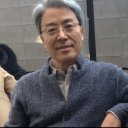
Prof. S.-R. Eric Yang,
Korea University, Dept. of Physics, 02855, Seoul, South Korea
Topologically ordered zigzag graphene nanoribbon
When: 12:00-13:00 CET, June 1st (Thursday), 2023
Where: Seminar Room, ICMM-CSIC, Campus de Cantoblanco, Madrid
Interacting disordered graphene zigzag ribbons are a new topologically ordered Mott–Anderson insulator displaying e–/2 fractional charges, spin-charge separation, and two degenerate ground states1,2. The disorder is a singular perturbation that couples electrons on opposing zigzag edges, resulting in instantons. This effect converts zigzag ribbons from a symmetry protected phase to a topologically ordered phase and generates e–/2 fractional charges on the opposite zigzag edges. These fractional charges are protected by an exponentially decaying soft gap. Furthermore, an interacting disordered zigzag nanoribbon has a finite topological entanglement entropy and its entanglement spectrum resembles the corresponding edge spectrum of the system. Doped ribbons display the following effects3, which can be experimentally tested: (1) In the low doping case and weak disorder regime, the soft gap in the tunneling density of states of the undoped case is replaced by a sharp peak at the midgap energy with two accompanying peaks. The e–/2 fractional charges that reside on the boundary of the zigzag edges are responsible for the midgap peak. Localization effects play an important role in the quantization of these fractional charges. (2) The midgap peak disappears as the doping concentration increases. The presence of e–/2 fractional charges will be strongly supported by the detection of these peaks. Doped zigzag ribbons may also exhibit unusual transport, magnetic, and inter-edge tunneling properties.
1. S.-R. Eric Yang, Topologically Ordered Zigzag Nanoribbon: e/2 Fractionally Charged Anyons and Spin-Charge Separation. (World Scientific, Singapore 2023).
2. S.-R. Eric Yang, Min-Chul Cha, Hye Jeong Lee, and Young Heon Kim, Phys. Rev. Research 2, 033109 (2020).
3. Young Heon Kim, Hye Jeong Lee, Hyun-Yong Lee, and S.-R. Eric Yang, Sci. Rep. 12, 14551 (2022).
—————————————————————————
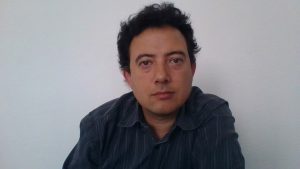
Dr. Rafael Sanchez ,
Department of Theory of Condensed Matter Physics, Universidad Autonoma de Madrid, Spain
Single-electron (or photon) heat currents and how to control them
When: 12:30-13:30 CET, May 11th (Thursday), 2023
Where: Seminar Room, ICMM-CSIC, Campus de Cantoblanco, Madrid
The flow and dissipation of heat is unavoidable in the operation of any circuit. Exploiting the properties of nanoscale conductors, one should be able to define devices able to control it on-chip, such as thermal rectifiers, transistors or circulators. These typically rely on strong nonlinearities and far from equilibrium configurations. In this talk I will discuss how these effects appear in minimal systems with a few number of levels (such as quantum dots [1,2] or qubits [3]) are coupled to two or more reservoirs, close to the linear response regime.
[1] R. Sánchez, H. Thierschmann and L. W. Molenkamp, Phys. Rev. B 95, 241401 (2017).
[2] A. Marcos-Vicioso et al., Phys. Rev. B 98, 035414 (2018).
[3] D. Goury and R. Sánchez, Appl. Phys. Lett. 115, 092601 (2019).
[4] I. Díaz and R. Sánchez, New J. Phys. 23, 125006 (2021).
YouTube link: https://www.youtube.com/watch?v=rrvH95h6s3E
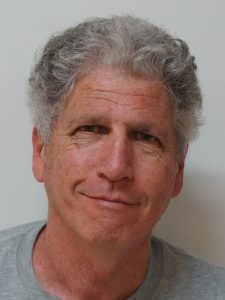
Prof. Yigal Meir,
Department of Physics, Ben Gurion University, Israel
Measuring Entropy of Exotic Particles
When: 12:00-13:00 CET, April 17th (Monday), 2023
Where: Seminar Room, ICMM-CSIC, Campus de Cantoblanco, Madrid
In recent years many candidate setups have been proposed to support exotic quasi-particles, such as Majorana fermions (MFs), which may be relevant for quantum computing, but whether these particles have been observed experimentally is currently a topic of a vivid debate. Entropy measurements can unambiguously separate these quasi-particles from other, simpler excitations. The entropy of a MFs is, for example, log2/2 (in units of the Boltzman constant), a fractional value that cannot be attributed to a localized excitation. However, standard entropy measurements applicable to bulk systems cannot be utilized in measuring the additional entropy of a mesoscopic device, which may be due to less than a single electron in the device. In this talk I will describe recent theoretical and experimental progress in performing such measurements, either using thermopower and/or using the Maxwell relations [1,2]. Particular examples will be single and double quantum dots in the Coulomb blockade regime. Lastly I will show how the formalism has been generalized to deduce the entropy from conductance measurements, and, applying it to a setup where two and three-channel Kondo physics have been observed, yields the fractional entropy of a single MF and a single Fibonacci anyon [3]. Lastly I will discuss the backaction of the measurement and discuss the possibility of measuring entanglement entropy [4].
[1] Direct entropy measurement in a mesoscopic quantum system, N. Hartman, et al., Nature Physics 14, 1083 (2018).
[2] How to measure the entropy of a mesoscopic system via thermoelectric transport, Y. Kleeorin et al., Nature Comm. 10 , 5801 (2019)
[3] Fractional Entropy of Multichannel Kondo Systems from Conductance-Charge Relations, C. Han et al., Phys. Rev. Lett. 128, 146803 (2022).
[4] Realistic protocol to measure entanglement at finite temperatures, C. Han, Y. Meir and E. Sela, Phys. Rev. Lett., in press.
Julien Varignon,
Laboratoire CRISMAT, CNRS UMR 6508, ENSICAEN, Normandie Université, France
First-principles studies of oxide superconductors
When: 12:00-13:00 CET, April 13th (Thursday), 2023
Where: Seminar Room, ICMM-CSIC, Campus de Cantoblanco, Madrid
Along with the famous cuprates, ABiO3 (A=Ba, Sr) and BaSbO3 oxide perovskites as well as nickel oxides, either as an infinite layer RNiO2 or Reduced Ruddlesden-Popper phase Rn+1NinO2(n+1) (R=La, Pr or Nd), belong to the few oxide systems exhibiting superconductivity once appropriately doped [Phys. Rev. B 37, 3745 (1988), Nature 390, 148 (1997), Nature 572, 624 (2019), Nat. Mater. 21, 160 (2021)]. They are thus alternative platforms for understanding the formation of bound electrons at the core of superconductivity. However, these systems look rather different in their pristine form (i) Ni+ cations exhibit a magnetic moment while Bi4+ or Sb4+cations do not, (ii) nickelates are prone to correlation effects while the two other materials do not, (iii) RNiO2 compounds are metallic while BaSbO3 and ABiO3 are insulators and (iv) nickelates and antimonates present a Mott-like regime while ABiO3 materials possess a charge-transfer like behavior. Although different at first glance, we reveal on the basis of Density Functional Theory (DFT) calculations, involving all relevant degrees of freedom and an exchange-correlation functional sufficiently amending self-interaction errors, that all these materials are prone to exhibit charge orderings (CO) accompanied by bond disproportionation and insulating phases. Once doping drive the materials in a metallic regime at the vicinity of a CO phase, the vibration associated with the bond disproportionation is sufficient to explain the formation of Cooper pairs and to reproduce the evolution of the critical temperature versus doping content observed experimentally for the different compounds. Finally, strong hybridizations between the O-p states and the relevant cation states as those appearing in bismuthates are shown to be a determining factor behind high temperature superconductivity in oxides.
YouTube link: https://www.youtube.com/watch?v=Azs6rw0OlzE
Dr. Sol Carretero Palacios
Universidad Autónoma de Madrid
Quantum trapping modelling based on the Casimir-Lifshitz force
When: 12:00-13:00 CET, March 16th (Thursday), 2023
Where: Seminar Room, ICMM-CSIC, Campus de Cantoblanco, Madrid
The Casimir-Lifshitz force originates from the quantum vacuum fluctuations of the electromagnetic field. This force is especially intense between interacting objects at nanoscale distances, and it can be attractive or repulsive depending on the optical properties of the materials involved (amongst other parameters). This fundamental phenomenon is at the heart of the malfunctioning of nano- and micro-electromechanical devices (NEMS and MEMS) that integrate many of the gadgets we use in our daily lives. Absolute control over these forces would make it possible to suppress adhesion and friction in these NEMs and MEMs.
During this talk, I will show the possibility of controlling the Casimir-Lifshitz force by tuning the optical properties of the interacting objects. Specifically, I will present diverse examples of quantum levitation of self-standing thin films comprising multilayer structures or films with spatial inhomogeneities, based on the Casimir-Lifshitz force.
YouTube link: https://www.youtube.com/watch?v=iA0VfSgdGbw
Prof. Manuel Nieto-Vesperinas, Instituto de Ciencia de Materiales de Madrid
New scenery of electrodynamics forces, including a view into nanophotonics
When: 12:00-13:00 CET, March 2nd (Thursday), 2023
Where: Seminar Room, ICMM-CSIC, Campus de Cantoblanco, Madrid
I shall demonstrate that the theory of electrodynamical forces that makes use of Maxwell’s stress tensor, only describes half the physics of these phenomena. The other half, that I shall uncover, and whose law we have formulated, is governed by the imaginary part of a complex stress tensor of which Maxwell’s is only its real part.
This complex stress tensor law constitutes a new paradigm of the mechanical efficiency of light on matter, and completes the landscape of electromagnetic forces in photonics and electrodynamics. It widens our understanding in the design of both illumination and matter, in optical manipulation and propulsión by light in e.g solar sails.
In tis context, one may look at the energy conservation law of Electromagnetism: The Poynting theorem: Energy transport is determined by two quantities of the momentum of light: one is real, well-known and currently observed; the other is imaginary, also known,
and alternating. However, the latter hinders the former; it is a workhorse of engineering in the design of transmission lines and antennas, and it is known as reactive power, which impairs the system performance by dissipation of feeding power.
I shall show that the complex momentum conservation law, which in a dielectric is relevant to the Abrahme-Minkowski debate, conveys a quantity which we coined as the “reactive strength of canonical momentum”, whose built-up hinders the efficiency of all currently
observed (time-averaged) electrodynamical forces, and I shall illustrate it with its consequences in the optical force on nanoparticles and nanoantennas: beads employed in optical tweezers in Biology, high index-resonators which are the basis of a wide range of
metasurfaces in Mie-resonant photonics or Mie-tronics, and plasmonic nanoparticles.
References:
M. Nieto-Vesperinas and X. Xu, Light: Sci. & Appl. 11:297 (2022).
J.Zeng and J. Wang, Light: Sci. & Appl. News&Views 12:20 (2023)
M. Nieto-Vesperinas and X. Xu, Phys. Rev. Res. 3, 043080 (2021).
Akashdeep Kamra, Universidad Autonoma de Madrid
The magnon-cooparon quasiparticle
Generating and moving unconventional spinal Cooper pairs using magnons
When: 12:00-13:00 CET, February 16th (Thursday), 2023
Where: Seminar Room, ICMM-CSIC, Campus de Cantoblanco, Madrid
A superconductor is formed when pairs of electrons undergo condensation into a macroscopically coherent state with a common order parameter. Its supporting dissipationless flow of charge currents underlies the central role that superconductors are playing in various emerging quantum technologies. The widely used conventional superconductors are constituted by spin-singlet Cooper pairs. These are formed by electrons bearing opposite spin, and therefore bear no net spin. For various phenomena, such as dissipationless magnetic memories and Majorana excitations, it is desirable to have equal-spin triplet Cooper pairs formed by electrons with the same spin. Engineering and controlling such exotic Cooper pairs has thus been a main goal and challenge for the scientific community [1].
In this talk, we will discuss some recent theoretical efforts in achieving the generation and control of such spin-triplet Cooper pairs using magnetic insulators and their spin excitations – magnons. We will show that if the superconductivity is mediated by antiferromagnetic magnons, instead of phonons, the resulting superconducting state is unconventional and can achieve a relatively high critical temperature [2,3]. This can be accomplished in bilayers comprising an antiferromagnetic insulator (AFI) interfaced to a normal metal. Furthermore, unconventional Néel spin-triplet Cooper pairs with pairing amplitude oscillating at atomic length scales have recently been predicted to emerge in AFI/superconductor bilayers [4]. Finally, we will discuss the emergence of a novel quasiparticle – magnon-cooparon – in a conventional superconductor interfaced with a ferromagnetic insulator [5]. The spatially inhomogeneous exchange field generated by a magnon in the ferromagnet induces spin-triplet Cooper pairs in the adjacent superconductor which act to screen the magnon spin. This quasiparticle, reminiscent of the polaron excitation, allows driving the spin-triplet Cooper pairs in a desired direction employing mature techniques from the field of magnonics. The magnon-cooparon also enables a powerful magnonic directional coupler, a key element in magnon-based logic and computing paradigms.
References:
[1] Matthias Eschrig. Spin-polarized supercurrents for spintronics: a review of current progress. Rep. Prog. Phys. 78, 104501 (2015).
[2] A. Kamra, A. Rezaei, and W. Belzig. Spin splitting induced in a superconductor by an
antiferromagnetic insulator. Phys. Rev. Lett. 121, 247702 (2018).
[3] E. Erlandsen, A. Kamra, A. Brataas, and A. Sudbø. Enhancement of superconductivity
mediated by antiferromagnetic squeezed magnons. Phys. Rev. B 100, 100503(R) (2019).
[4] G. A. Bobkov, I. V. Bobkova, A. M. Bobkov, and A. Kamra. Néel proximity effect at
antiferromagnet/superconductor interfaces. Phys. Rev. B 106, 144512 (2022). [5] I. V. Bobkova, A. M. Bobkov, A. Kamra, and W. Belzig. Magnon-cooparons in magnet-
superconductor hybrids. Communications Materials 3, 95 (2022).
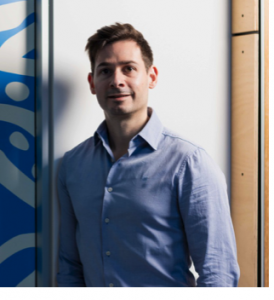 David Martinez-Martin, University of Sidney
David Martinez-Martin, University of Sidney
Life and cell’s mass dynamics
When: 12:00-13:00 CET, January 19th (Thursday), 2023
Where: Main Hall, ICMM-CSIC, Campus de Cantoblanco, Madrid
Living cells sense and exchange biological, chemical, and mechanical information, as well as nutrients, water and waste products with their surroundings. These processes involve changes of a cell’s volume and mass[1] and are tightly linked to fundamental processes such as metabolism, proliferation[2], gene expression[3] and cell death. Yet it remains challenging to characterise the dynamics and regulation of a cell’s mass and volume in real time and with high accuracy, hampering our understanding of cell physiology. Moreover, dysregulation of cell mass is a critical underlying force in the development and progression of many disorders[4] such as cancer, diabetes type 2, obesity, cardiovascular disease and ageing. Therefore understanding how cells regulate their mass has enormous potential to transform the way we diagnose, monitor and treat disease[5].
I will introduce a new technology (picobalance) that we have developed, which is based on an optomechanical microresonator[6]. It measures the mass of single or multiple cells in culture conditions over days at millisecond time resolution reaching subpicogram mass sensitivity. Besides, this technology allows measuring cells’ rheological properties[7]. I will present some of the results we have discovered using this technology in both mammalian cells[6] and yeast[1], and which challenge models in biology that have been central for decades[1, 5, 6].
References
1. Cuny, A.P., et al., High-resolution mass measurements of single budding yeast reveal linear growth segments. Nat Commun, 2022. 13(1): p. 3483.
2. Lang, F., et al., Functional significance of cell volume regulatory mechanisms. Physiological Reviews, 1998. 78(1): p. 247-306.
3. Haussinger, D., The role of cellular hydration in the regulation of cell function. Biochemical Journal, 1996. 313: p. 697-710.
4. Lloyd, A.C., The Regulation of Cell Size. Cell, 2013. 154(6): p. 1194-1205.
5. Martinez-Martin, D., Dynamics of cell mass and size control in multicellular systems and the human body. Journal of Biological Research-Thessaloniki, 2022. 29.
6. Martinez-Martin, D., et al., Inertial picobalance reveals fast mass fluctuations in mammalian cells. Nature, 2017. 550(7677): p. 500-505.
7. Flaschner, G., et al., Rheology of rounded mammalian cells over continuous high-frequencies. Nat Commun, 2021. 12(1): p. 2922.
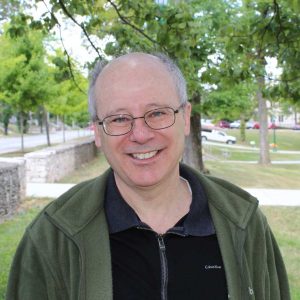
Herbert Fertig, Indiana University
Quantum Geometric Dipole in Collective Excitations
When: 12:00-13:00 CET, December 19th (Monday), 2022
Where: Seminar Room, ICMM-CSIC, Campus de Cantoblanco, Madrid
In recent years it has become increasingly appreciated that electrons in solids possess quantum geometric structure that impact the electronic properties of the system. Typically, this takes the form of a Berry curvature which contributes to the electron velocity in its response to external fields. In this talk we discuss quantum geometric properties of collective modes of electronic materials, focusing on those that can be described as two-body excitations. We show that generally such excitations possess their own type of geometric measure, closely related to an electric dipole moment, which we call the quantum geometric dipole (QGD). We will focus on two examples of this: excitons in semiconducting systems, and plasmons in two-dimensional metals. We show that for excitons, a non-zero QGD appears when there is no effective Lorentz invariance in the system, even at long wavelengths, and that its presence leads to a perpendicular exciton drift in an electric field. For the case of plasmons, we consider the impact of the QGD on scattering from a circularly symmetric potential, showing that the QGD necessarily gives rise to non-reciprocal behavior. In general the presence of a non-vanishing QGD impacts the dynamics of these collective modes, and we discuss some implications for experiment.
YouTube link: https://www.youtube.com/watch?v=opFRtNcuyQU
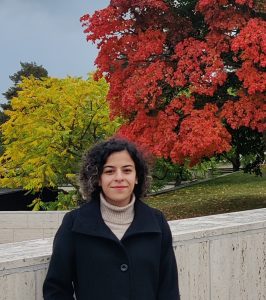
Maryam Khosravian, Aalto University
Impurity-induced excitations in a topological two-dimensional ferromagnet/superconductor van der Waals moiré heterostructure
When: 12:00-13:00 CET, November 24th (Thursday), 2022
Where: Main Hall, ICMM-CSIC, Campus de Cantoblanco, Madrid
The emergence of a topological superconducting state in van der Waals heterostructures provides a new platform for exploring novel strategies to control topological superconductors. In particular, impurities in van der Waals heterostructures, generically featuring a moiré pattern, can potentially lead to the unique interplay between atomic and moiré length scales, a feature absent in generic topological superconductors. Here we address the impact of nonmagnetic impurities on a topological moiré superconductor, both in the weak and strong regime, considering both periodic arrays and single impurities in otherwise pristine infinite moiré systems. We demonstrate a fine interplay between impurity-induced modes and the moiré length, leading to radically different spectral and topological properties depending on the relative impurity location and moiré lengths. Our results highlight the key role of impurities in van der Waals heterostructures featuring moiré patterns, revealing the key interplay between length and energy scales in artificial moiré systems.
[1] Phys. Rev. Materials 6, 094010(2022).

José C. Abadillo-Uriel, CEA Grenoble
Manipulating and extending the coherence of hole spins
When: 12:00-13:00 CET, November 16th (Wednesday), 2022
Where: Main Hall, ICMM-CSIC, Campus de Cantoblanco, Madrid
Hole spin qubits in semiconductor quantum dots afford the advantage of efficient electrical control. This control is enabled by the strong spin-orbit interaction (SOI) in the valence band of semiconductors, which couples the spin to the real-space motion of the hole in the applied electric fields. In this talk, I will present our recent theoretical and experimental progress on hole spin qubits. We show that the intrinsic SOI of the semiconductor valence band offers unique mechanisms to manipulate the hole spins [1]. While this electrical susceptibility couples the hole spin to charge noise, I will show that hole qubits can be engineered to minimize decoherence at sweet spots [2, 3]. Finally, I will cover how the SOI allows the coupling of the hole spin to cavity photons [3, 4], going well beyond what has been achieved with electron spins and paving the way toward a long-range photon-mediated two-qubit gate.
YouTube link: https://www.youtube.com/watch?v=bnOnMz8Ek5U
[1] B. Martínez, JC Abadillo-Uriel, et al., arXiv:2209.10231
[2] N. Piot et al., Nat. Nano. 17, 1072–1077 (2022)
[3] Michal, JC Abadillo-Uriel, et al., arXiv:2204.00404
[4] C. Yu et al., arXiv:2206.14082
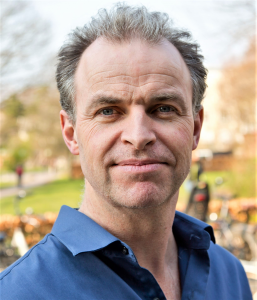
Jens Paaske, Niels Bohr Institute
Microwave response of superconducting sub-gap states
When: 11:00-12:00 CET, November 10th (Thursday), 2022
Where: Seminar Room, ICMM-CSIC, Campus de Cantoblanco, Madrid
Josephson junctions spanning a Coulomb-blockaded quantum dot host subgap states with a characteristic dispersion with phase difference and gate voltage, which to a large extent determine the microwave response of the junction. In this lecture, I will present our calculations of this linear microwave response, with special emphasis on spinful (odd occupied) quantum dots giving rise to Yu-Shiba-Rusinov bound states and the accompanying interaction driven quantum phase transition from π- to 0-junction behavior. I shall also discuss the intricate dc current response of a Josephson junction based on a double quantum dot with two phase shifted microwave tones on the individual gate voltages. This is shown to lead to a tunable phi_0 junction and to allow for supercurrent rectification.
YouTube link: https://www.youtube.com/watch?v=gFviD0Ktypc
[1] Cecilie Hermansen, Alfredo Levy Yeyati, JP, Phys. Rev. B 105, 054503 (2022)
[2] Carlos Ortega-Taberner, Antti-Pekka Jauho, JP; arXiv:2207.06152
